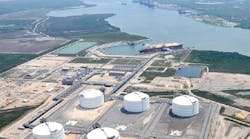Studying Gross Domestic Product (GDP) can lead people to faulty economic conclusions, according to Mark Konold, climate and energy Caribbean program manager for Worldwatch, an independent research organization based in Washington, D.C. He believes studying GDP growth to measure prosperity and well-being has been an inadequate exercise for some time. He cites gross world product to illustrate.
In 2012, gross world product increased to just over $83 trillion, a 4.85 percent increase over 2011, according to Worldwatch’s latest Vital Signs Online trend report. This might indicate a sign of strength, but not when compared to previous years. In 2010 and 2011, gross world product grew 6.35 and 5.67 percent respectively, demonstrating slowing growth.
“Higher human development can begin to be seriously measured only when the impact of expenditures is evaluated and when more-qualitative elements are examined as part of a much larger and more complex mechanism to decipher human development,” Konold states.
The report shows that most growth is taking place in emerging economies, and that the total GDP of emerging economies is now roughly equal to that of all the advanced economies. The gross world product is the sum of the GDPs of all countries. This typically includes levels of consumption, investment, government spending, the cost of imports, and the proceeds from exports.
Because of various transaction costs, floating exchange rates, and barriers such as tariffs, a “purchasing power parity exchange rate” puts purchasing power for different countries on an even footing, according to Worldwatch.
The report notes that countries that avoided overleveraging themselves while experiencing robust growth in recent years have had relatively healthier fiscal positions and therefore higher levels of foreign direct investment. This growth was hindered slightly, they believe, as advanced economies such as the United States, Japan, and the members of the European Union (EU) dealt with crises such as the “fiscal cliff” and the possible breakup of the E.U.
Unemployment levels also darken the picture of economic health as implied by growth rates. According to the International Labor Organization, 200 million people around the world are unemployed—about 6 percent of the global workforce.
The report cites newer metrics seeking a more comprehensive depiction of humanity's overall welfare. The Genuine Progress Indicator (GPI), for example, includes the economic cost of expenditures that diminish “community capital.” And in 2011, the United Nations General Assembly passed a resolution stating that all countries should begin measuring happiness—taking a cue from Bhutan, which began tracking Gross National Happiness in the 1970s. Similarly, the U.N. Development Program prepares a Human Development Index as an indicator of well-being that relies primarily on health (life expectancy at birth), education (mean and expected years of schooling), and living standards (gross national income per capita on a logarithmic scale).




